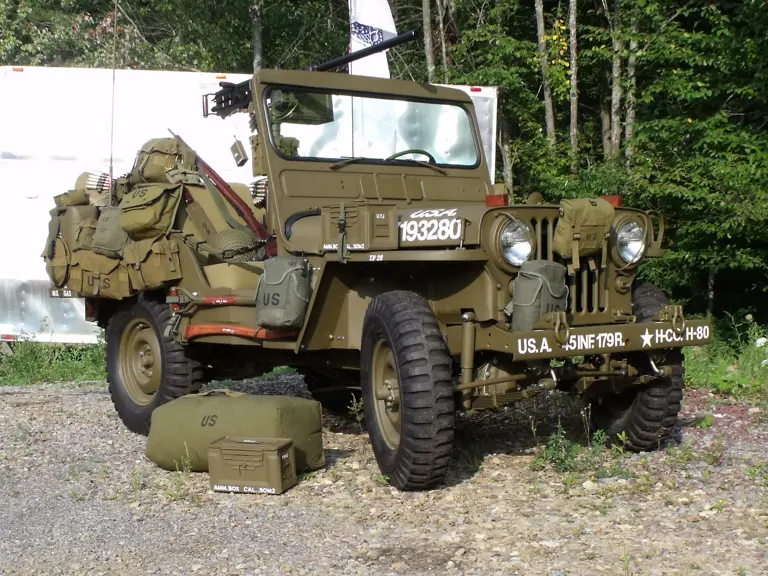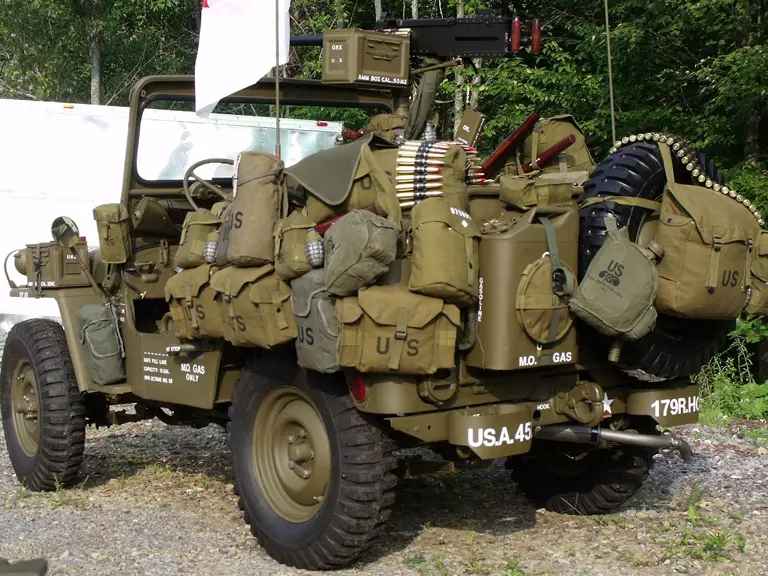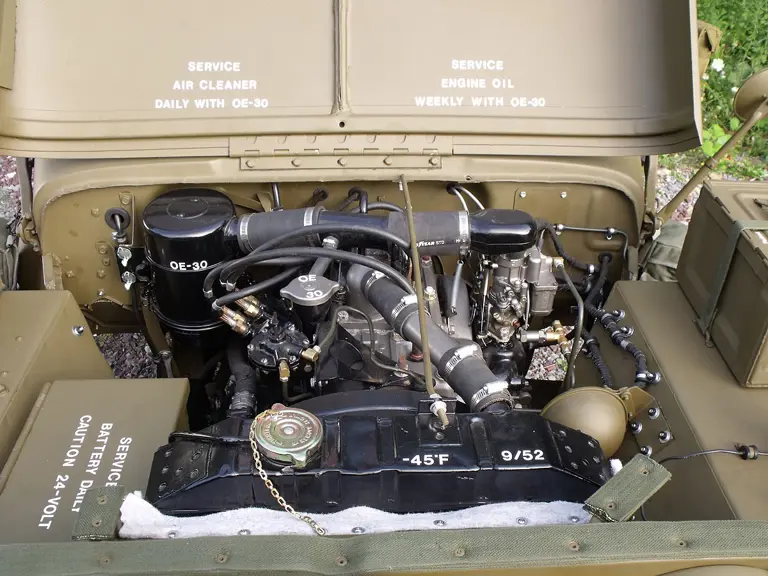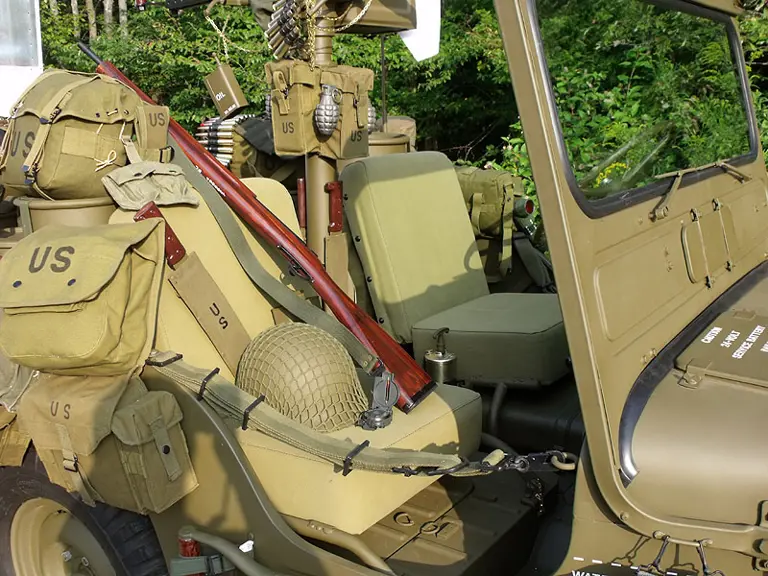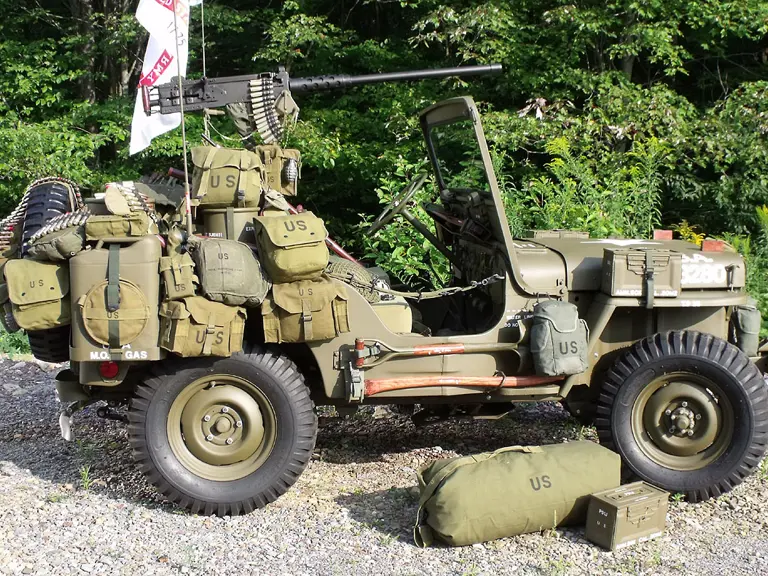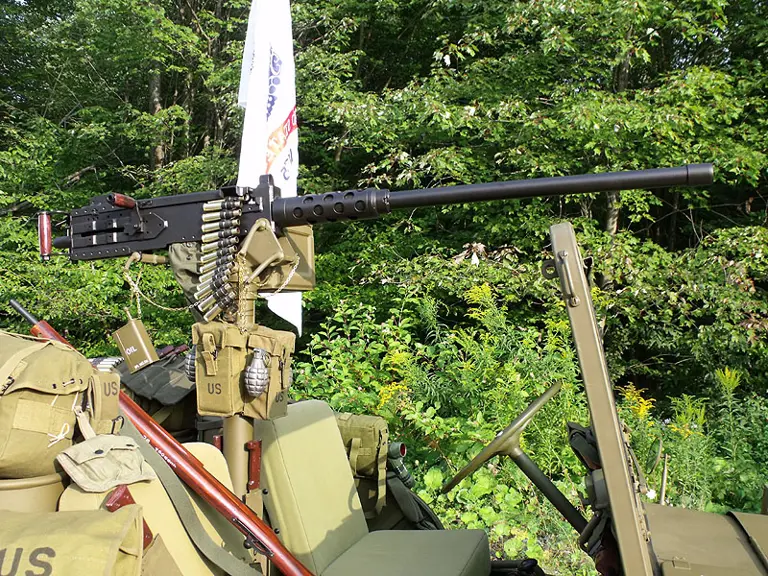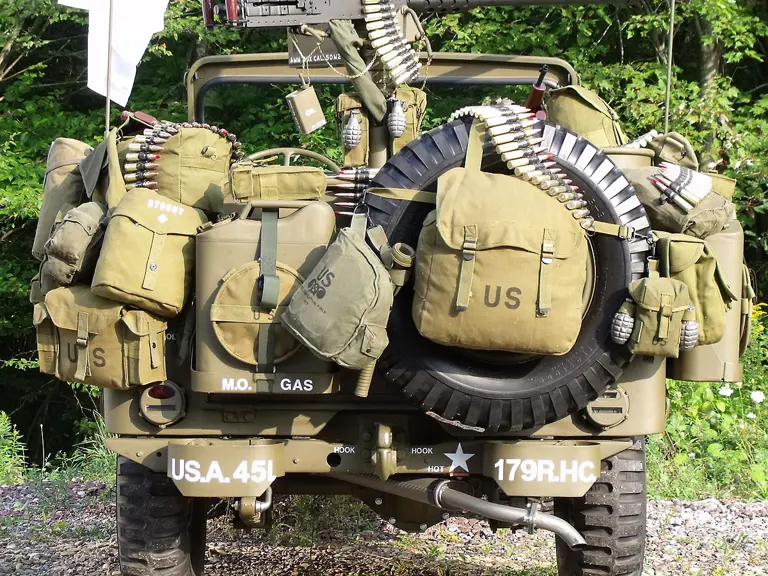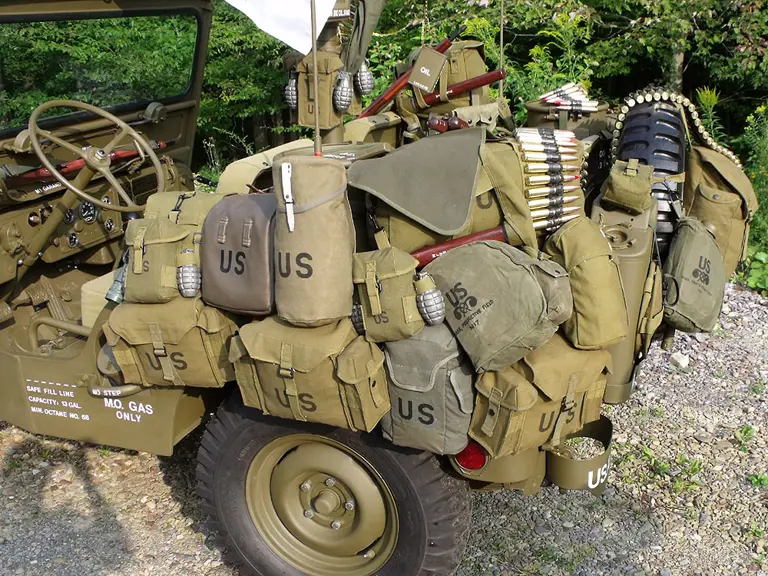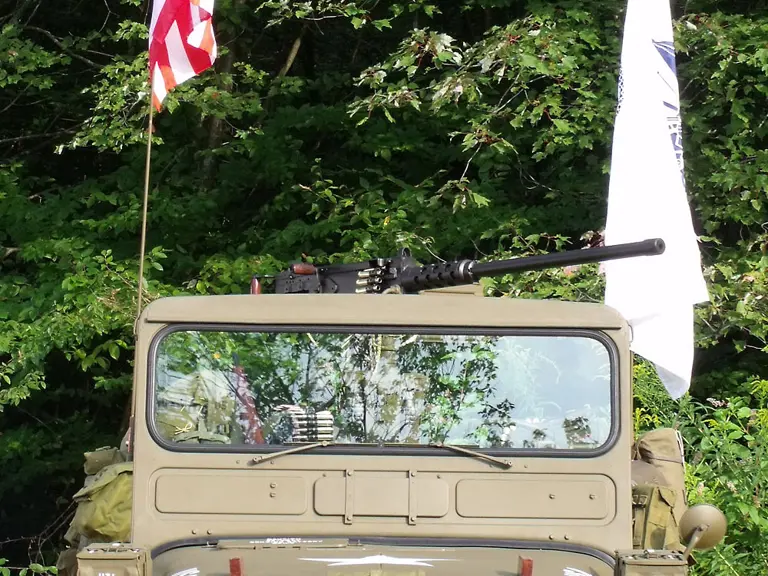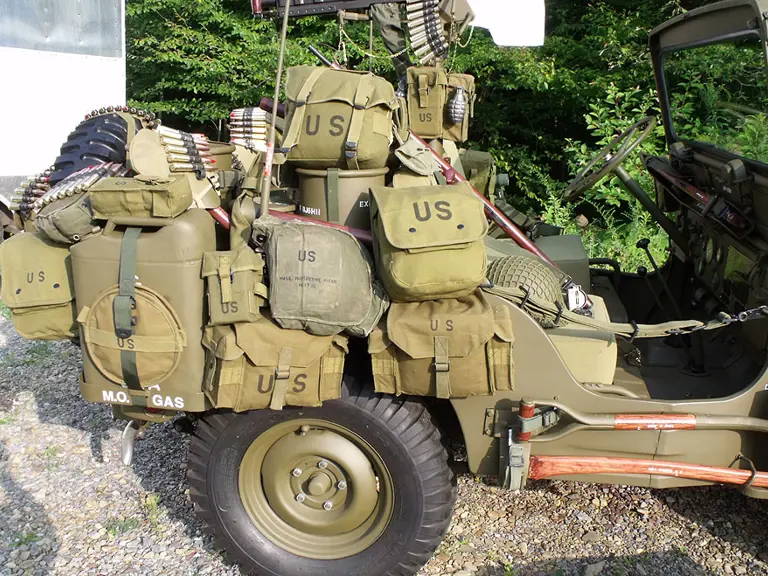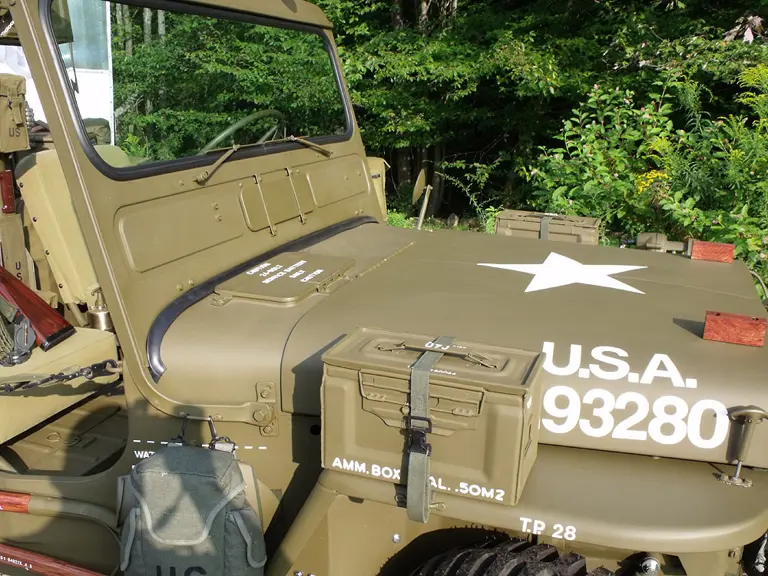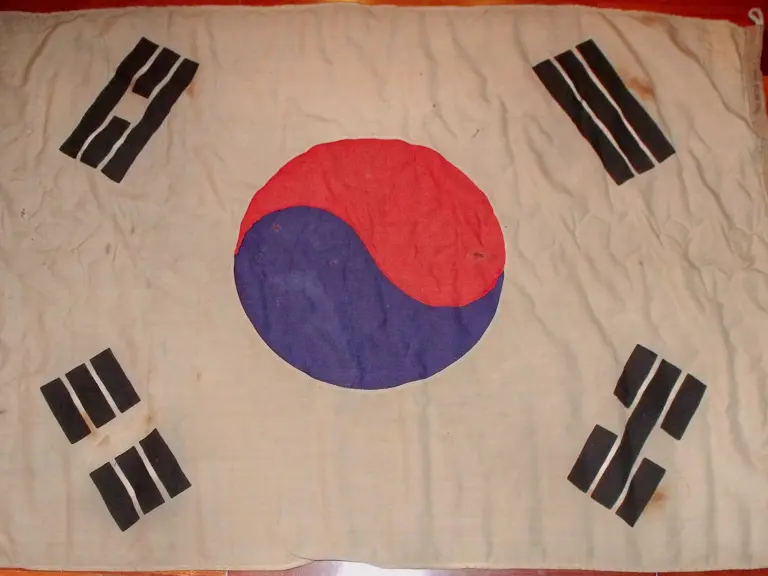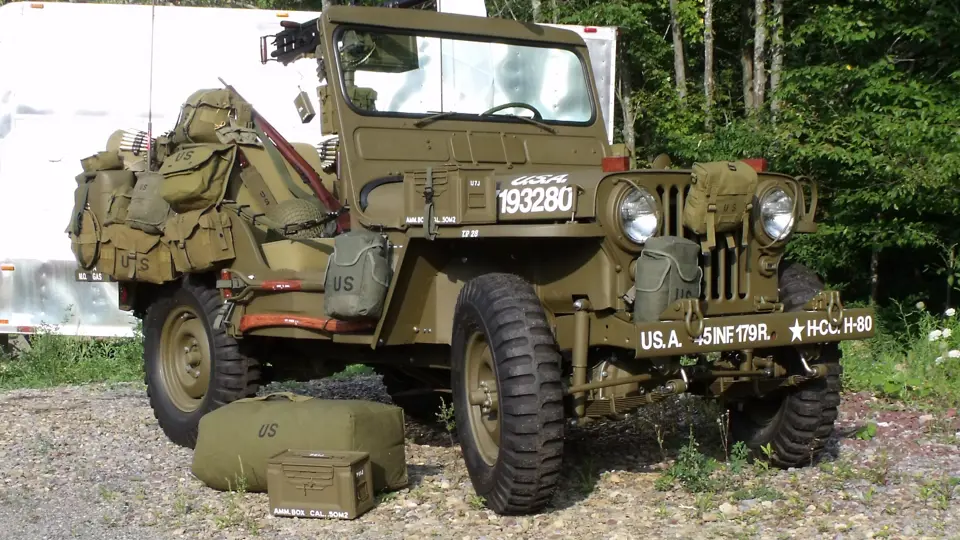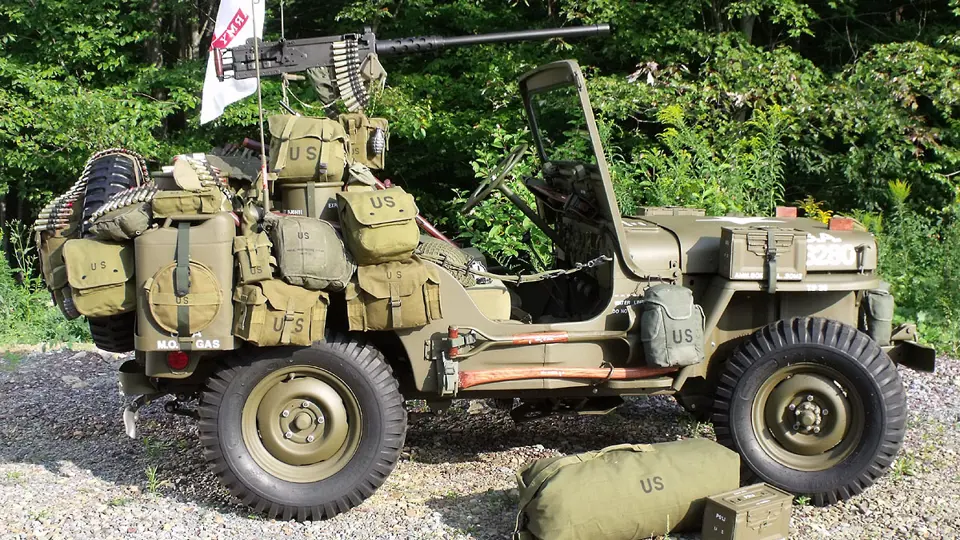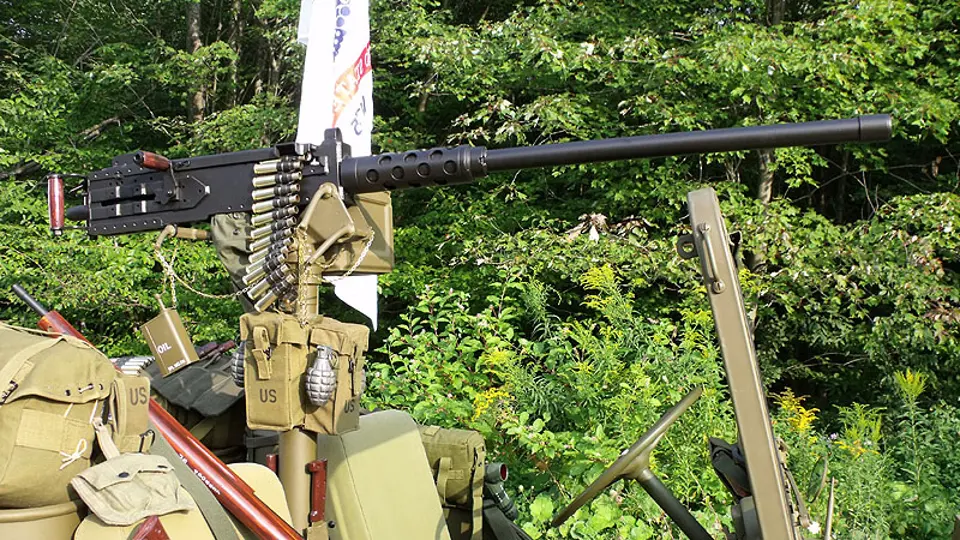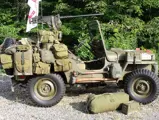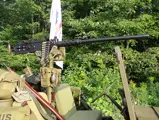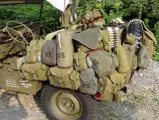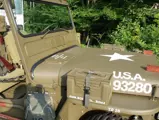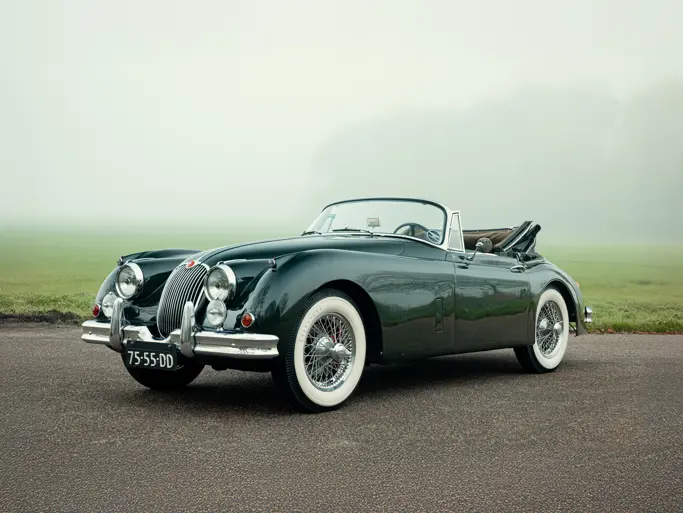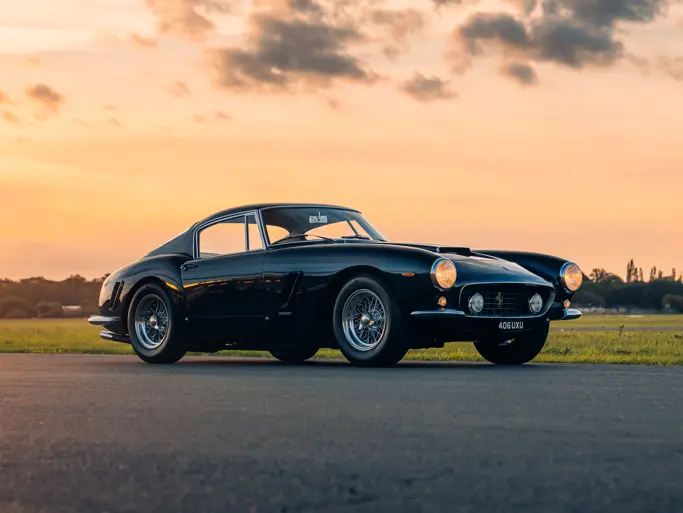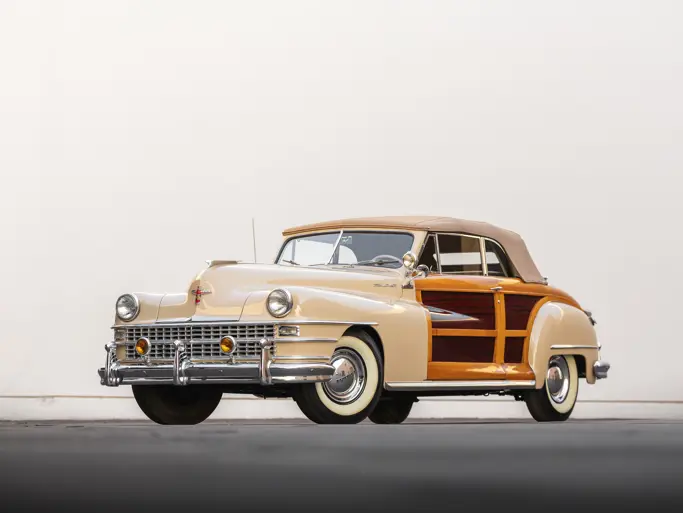 | Hershey, Pennsylvania
| Hershey, Pennsylvania
60 bhp, 134 cu. in. side-valve four-cylinder engine, three-speed manual gearbox with two-speed transfer case and four-wheel drive, live front and rear axles with semi-elliptic leaf springs, and four-wheel hydraulic drum brakes.
- An authentic M38
- Recent ground-up restoration by expert collectors
- Loaded with period accessories and paraphernalia
Who among us will not recall the ubiquitous Jeeps which appeared as ‘supporting actors’ in nearly every episode of the immensely popular television series M*A*S*H?
The WWII role of the versatile and reliable Jeep is legendary and spawned a line of products still in production 70 years later by the corporate successors to the original Willys-Overland concern that produced them.
Between the end of WWII in 1945 and the beginning of the Korean War in 1950, Willys had been constructing new ‘civilian’ Jeeps called CJ-2As, followed by the CJ-3As.
Willys began reviving its military Jeep production for the Korean War by upgrading the CJ-3A with water-fording abilities for the Marine Corps, designated CJ-V35/U, from March to June 1950. Additional changes made included a one-piece windshield, conventional wipers, larger headlights and a more durable rear axle among other improvements. This military-grade model was identified as the M38 with production beginning in September 1950.
Willys built over 60,000 M38s for Korean War deployment, and naturally Jeeps were once again in the thick of battle. Though the mostly mountainous terrain of North Korea might have logically influenced the Army to minimize the use of the Jeep, this did not turn out to be the case. In October 1950, the Jeep led the strategic withdrawal from the North when the Chinese entered the war. Once the fighting began along the 38th parallel (the line dividing North Korea and South Korea), the Jeep assumed many new combat and support roles. Some Jeeps were equipped with communications gear that allowed them to be employed in forward positions, directing air strikes and observation airplanes. With the heavy movement of refugees from the north, the military police also began to rely more on the adaptable Jeep. It could be operated on the paved streets of cities and towns or on the dirt roads of the countryside. The Jeep in Korea proved to be popular as well as the principal means of transportation for both officers and enlisted men.
This 1952 Jeep M38, from its final year of production, was subject to a ground-up restoration by a well-known father and son team, once known for their meticulous restorations of Rolls-Royce automobiles but since focusing on the preservation of military vehicles, achieving national recognition for these efforts since the late ’80s. The standard of authenticity on this 45th Infantry Thunderbird Division example is breathtaking, with a correctly detailed engine bay and chassis as well as an impressive host of accessory features, including the following:
- A ‘Ma Deuce’ M2 50-caliber machine gun, today equipped with a simulated firing mechanism (producing realistic flame blasts with appropriate sound)
- Approximately 10 grenades (dormant) and ammo
- Three mattocks, three bayonets and a folding shovel, axe and helmet
- Two M1 Garand training rifles (used for demonstration of loading/unloading and cleaning)
- Two ‘Jerry cans,’ various ammo cans and G.I. duffel bags
- Tool bag, footlocker, 48-star American flag, U.S. Army flag and more
Interestingly, a distressed Korean flag was discovered under the rear seat at the time of restoration, dated 1953, and is also included with the Jeep. And last but not least are the three 50-caliber bullet holes found on the vehicle. Two were filled in during the restoration, but one was intentionally left as found for display purposes, above the driver's side rear fender well. The overall quality and authenticity of this Jeep’s comprehensive, fresh restoration is unsurpassed and documented with a photographic file.
This historically significant M38 Jeep is a rare and unusual find, a perfect complement to any display of American military history, whether for a museum or private collection or use as a parade vehicle, as it is also reported to be a fine runner.




